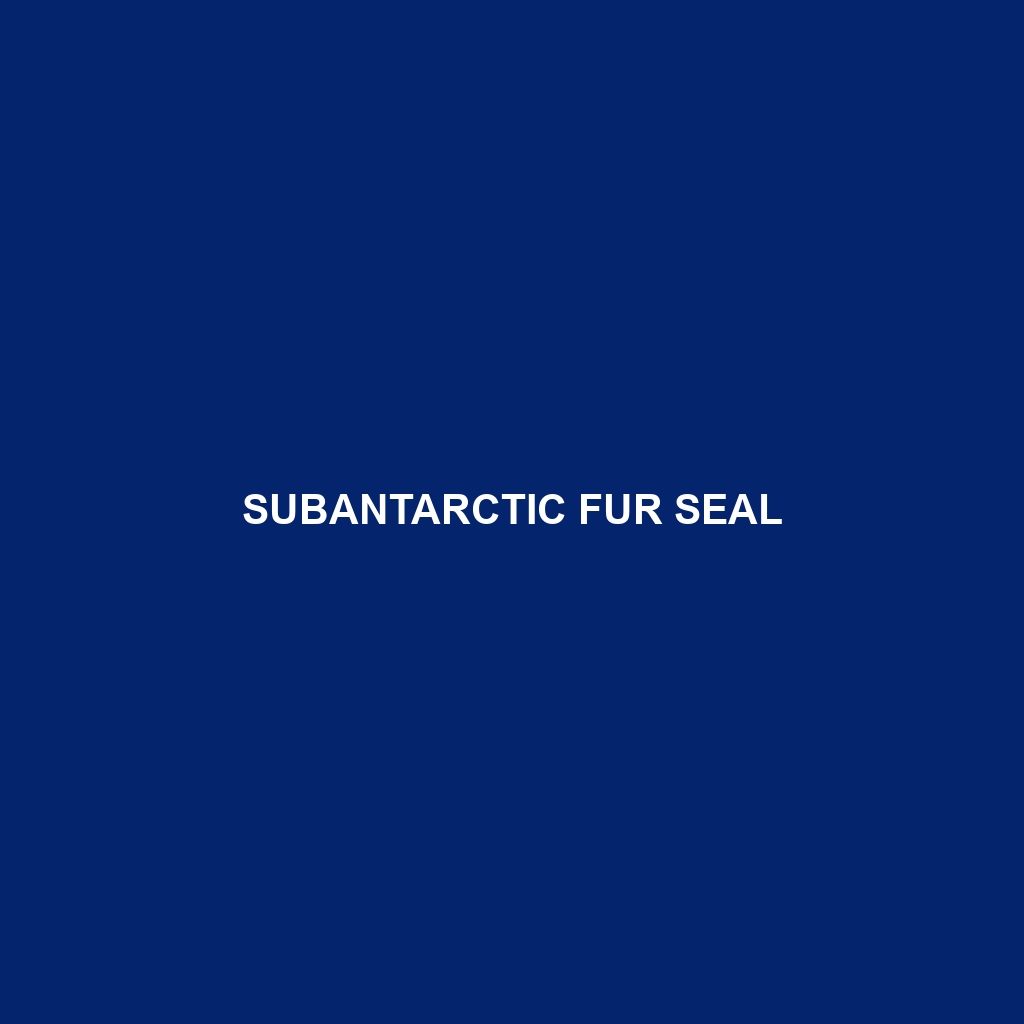Guadalupe Fur Seal (Arctocephalus townsendi)
Common Name: Guadalupe Fur Seal
Scientific Name: Arctocephalus townsendi
Habitat
The Guadalupe Fur Seal is primarily found along the Pacific coast of Mexico, particularly around the Guadalupe Island, located off the Baja California Peninsula. These seals prefer rocky shorelines and coastal waters, where they can haul out to rest, breed, and nurse their pups. Their habitat includes sub-tropical to temperate marine environments, making them well-adapted to the unique conditions of their range.
Physical Characteristics
Guadalupe Fur Seals are medium-sized pinnipeds, with males reaching lengths of up to 6 feet (1.8 meters) and weighing around 450 pounds (204 kg). Females are smaller, typically measuring about 5 feet (1.5 meters) and weighing up to 150 pounds (68 kg). Their fur is dense and often appears dark brown to gray, with lighter underbellies. Notable features include a pronounced muzzle, which can be distinguished by a noticeable protrusion and a coat that exhibits seasonal variations in color and density.
Behavior
Guadalupe Fur Seals exhibit a range of behaviors that are characteristic of marine mammals. They are known for their agile swimming abilities, often seen diving underwater for extended periods in search of food. Socially, these seals are typically observed resting in groups, called “pods,” especially during the breeding season. They communicate through a series of vocalizations and body language, displaying behaviors like barking and nuzzling.
Diet
The diet of the Guadalupe Fur Seal primarily consists of a variety of fish, squids, and crustaceans. They are opportunistic feeders and utilize their excellent diving skills to forage for food deep in the ocean. Their feeding habits often revolve around schooling fish, making them vital predators in their marine ecosystem.
Reproduction
Breeding season for Guadalupe Fur Seals typically occurs from **June to August.** During this time, males establish territories and compete for females. After a gestation period of about eleven months, females give birth to a single pup. The maternal bond is strong; mothers nurse their pups for six to twelve months before they are weaned.
Conservation Status
The Guadalupe Fur Seal is currently classified as Endangered by the International Union for Conservation of Nature (IUCN). Threats to their population include habitat loss, climate change, and entanglement in fishing gear. Conservation efforts are underway to protect their natural habitats and mitigate these risks.
Interesting Facts
Guadalupe Fur Seals are unique in that they are one of the few pinniped species that breed exclusively in the marine environment. They are also known for their remarkable diving capabilities, being able to reach depths of over 800 feet (244 meters)!
Role in Ecosystem
As a significant predator within their marine environment, Guadalupe Fur Seals play a crucial role in maintaining the balance of their ecosystem. They contribute to controlling fish populations, which in turn supports healthy marine biodiversity. Their interactions with other species, such as seabirds and fish, further emphasize their importance within the food web.
